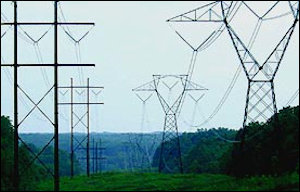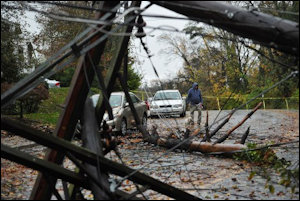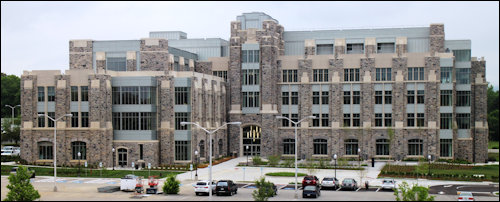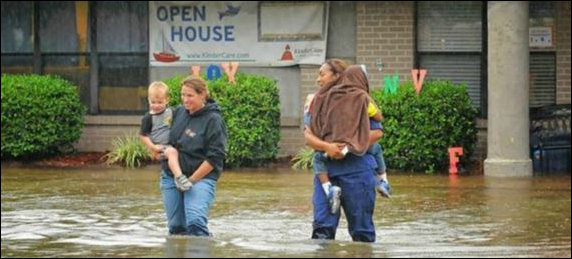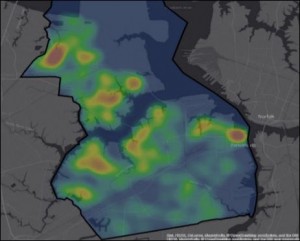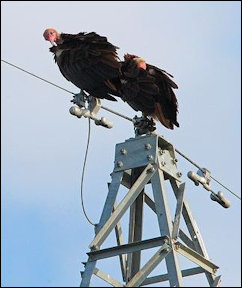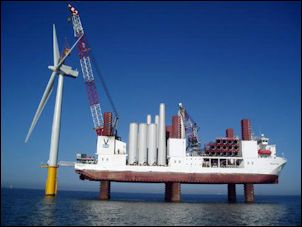
The 2017-18 Bomb Cyclone
The twelve days between Dec. 27, 2017, and Jan. 8 this year saw one of the longest and most intense deep freezes ever recorded for the East Coast. Snow, ice and frigid temperatures plunged much of the United States into winter misery for a seemingly endless period.
The so-called “bomb cyclone” also put the East Coast electric grid under intense stress. The period of Jan. 4-6 accounted for three of the top ten winter demand days in the history of PJM Interconnection, the regional transmission organization of which Virginia is a part. Electricity consumption and output surged 21% over average daily loads.
Were it not for the ability to fire up old coal and oil power plants, many of which are scheduled for phasing out, the regional grid would have been overloaded and the system would have been hit with widespread blackouts, concludes a report, “Reliability, Resilience and Oncoming Wave of Retiring Baseload Units,” issued last month by the National Energy Technology Laboratory.
The Lab’s analysis of the PJM system found that coal generation surged from 20 gigawatts to 51 gigawatts of supplied capacity during the bomb cyclone. By contrast, nuclear power, which typically runs all out with little variability throughout the year, provided no surge capacity.
Natural gas generation averaged about 25 gigawatts, but its surge capacity was limited by pipeline constraints and the necessity of competing with gas as a home-heating fuel during the freeze. As a percentage of total output, gas actually fell. Emphasizes the report: “It was coal, and secondarily fuel oil, fired primarily in fuel switching natural gas units, that provided the electricity crucial for keeping natural gas-fired residential furnace fans operating during the extreme cold of the BC.”
And renewables? Renewable output declined. That’s what happens when clouds and snow blot out solar output. As it happened, wind power declined as well. “Intermittent generating sources experienced a significant decline nearly inverse to growth in demand,” states the report. “As the storm settled over the Mid-Atlantic area, PJM saw decreased output from solar and wind resources.”
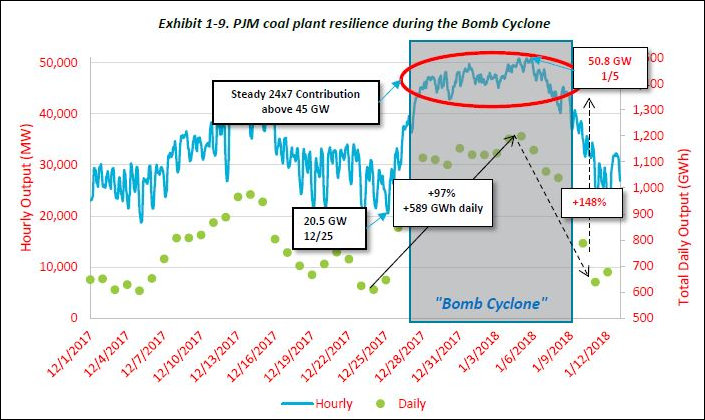
Coal, the fuel that everyone loves to hate, saved the day. Had the coal capacity not been available, the report stated, “a 9-18 GW shortfall would have developed, depending on assumed imports and generation outages, leading to system collapse.”
Let that sink in: “Leading to system collapse.”
Should I repeat that for you?
The study authors fear for the future. They write:
The 30 GW of coal that ramped up to meet the surge in PJM load includes the units most likely to retire due to insufficient market support, given those units were not running at baseload levels before the event. As more of these units retire, the ability of the system to respond to extreme events with reliance, let alone economically, deteriorates. To maintain the resilience seen in this event, any retiring units that were dispatched during the event would have to be replaced with other resilient generation sources and their associated infrastructure (e.g. pipelines, transmission).
Bacon’s bottom line: Let me spell out what this means for energy policy in Virginia. Current regulatory policy is hostile to coal-generated electric power, and could become even more hostile if Virginia joins the Regional Greenhouse Gas Initiative. Powerful environmental and activist groups backed by out-of-state money want to phase out nuclear power by blocking the bid of Dominion Energy Virginia to re-license four nuclear units in the years ahead, and they want to halt the construction of any more gas-fired units. And, although it appears to be too late to do so, they opposed construction of the Atlantic Coast Pipeline and the Mountain Valley Pipeline. In effect, they want to build a grid in which in gains from energy efficiency plus increases in intermittent wind and solar power replace all coal and nuclear and account for any incremental increase in demand growth.
If we assume advances in the economics of battery storage, a renewables-heavy grid can be made to work just fine under routine circumstances. In theory, massive banks of batteries can store excess solar wind power to shift electric loads to times of the day when the sun isn’t shining and the wind isn’t blowing. Building all those batteries would be expensive, but it could be done. But it’s one thing to store enough electric power to handle daily load shifts. It’s another to build enough batteries to provide power for a 12-day storm system. It can’t be done. And when the electricity runs out, not only do the 40% of households who rely upon electricity to heat their homes start freezing, so do the households that use natural gas because there’s no electricity to run the fans and blowers.
Massive storm systems like the bomb cyclone and the Polar Vortex of several years ago occur only once every few years. But occur they do. And the energy mix of our electric grid must be built around that reality. Far from increasing resilience — the buzzword of the day — we could be laying the groundwork for self-inflicted disaster.



